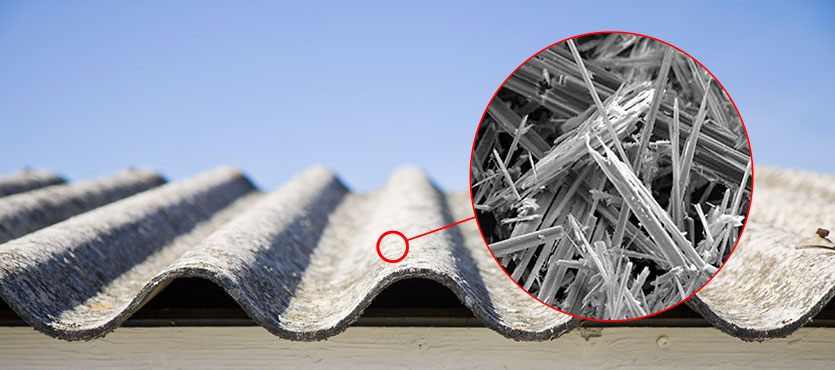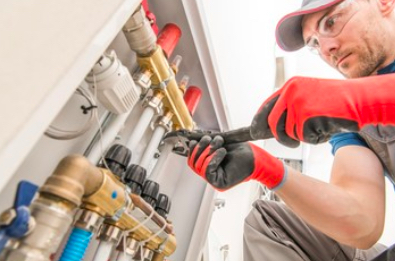Asbestos Perth is a group of naturally occurring fibrous minerals. It is a health hazard that can cause serious illnesses like lung cancer and asbestosis.
Some effects of exposure to asbestos can be acute (immediate), while others may take a long time to develop. Mesothelioma is one example: it can take 20 years or more for mesothelioma to start showing symptoms.
Chrysotile, the most common form of asbestos, is now banned in over 50 countries. However, it is still used in some commercial products. Although all forms of asbestos can cause cancer, the chrysotile type seems less risky than the other types. This is because chrysotile does not break down inside the body as easily as the other types do so it may be less damaging to the human body.
Many organizations exist to protect chrysotile and the other forms of asbestos. They have helped fund studies that claim that low exposure to chrysotile poses little risk to people. Despite this, the International Labor Organization, National Cancer Institute, and World Health Organisation all agree that chrysotile is carcinogenic.
Asbestos is a group of minerals that contain long, curly fibers. These fibers are made of a fibrous silicate mineral and can be woven together to make strong and durable materials. Serpentine asbestos has short, needle-like fibers and includes the minerals chrysotile, amphibole (tremolite, anthophyllite, and crocidolite), and actinolite. Amphibole fibers are brittle and more limited in their ability to be woven. Chrysotile has been used for more than 2,000 years, beginning with cremation cloths and oil lamp wicks.
In recent years, a few articles have appeared in scientific pathology journals and a well-known book published by the WHO/IARC, questioning the carcinogenicity of chrysotile. These articles use selective references and misinterpret the data to make unfounded claims that mesothelioma in chrysotile-exposed populations is due to other types of asbestos. [30]
It is essential to understand that hazard and exposure are two different factors that must be evaluated when assessing overall risk. It is also important to understand that there are safe substitutes for all asbestos-containing products. The development of new and safer substitutes will help reduce the number of people who suffer from mesothelioma or other asbestos-related diseases. These alternatives include synthetic fibers and cellulose, plastics, and metals.
Amosite
A very dangerous type of asbestos, amosite is dark brown in colour and is made up of sharp needle-like fibres that can be easily inhaled when disturbed and sent airborne. It is believed to have been used in a variety of products and materials such as cement, coatings and insulation products. It was once the most popular type of asbestos but, like other types of asbestos, has been linked to various health conditions including mesothelioma.
Amosite is known as the ‘brown asbestos’ and was once widely used in construction, insulation and fireproofing. It is believed to be present in up to 5% of buildings in the United States. In the past, manufacturers used it in roof tiles and thermal insulation products and incorporated it into a range of household and automotive products such as shingles, fire blankets, clutches, and brake linings.
All forms of asbestos are currently classified as a carcinogen and all cause mesothelioma when inhaled by humans. However, chrysotile asbestos is the most common type of asbestos and is still being used in certain areas. Asbestos is also used as a fire retardant.
Chrysotile asbestos has been linked to various illnesses such as mesothelioma, lung cancer and fibrosis. Symptoms may not show themselves for years after exposure. Exposure to asbestos can be fatal, but even mild exposure to asbestos for years could lead to health complications affecting the lungs.
Asbestos-related diseases have many causes, but the most commonly reported symptoms are pleural effusions and pulmonary fibrosis. These are caused by a build-up of fluid in the pleura (the membrane that surrounds the lungs) and the development of scar tissue that prevents the lung from expanding. This can be very painful and is difficult to treat.
Symptoms of asbestos exposure can be treated with medications and surgery, but the best treatment is prevention. If you are worried about being exposed to asbestos, you should seek professional medical advice as soon as possible. Using an asbestos removal company is an effective way to prevent the spread of harmful asbestos particles. Dr Parkash Gill is a Professor of Medicine and Pathology and leads our mesothelioma research team.
Crocidolite
A gray-blue to leek-green fibrous variety of the amphibole mineral riebeckite, crocidolite asbestos has been linked to more illnesses and deaths than any other type of asbestos. It is also one of the most dangerous types of asbestos to inhale because it has fine, sharp fibers that are more likely to become lodged in lungs and abdominal cavity, causing deadly diseases such as mesothelioma. It is not mined anymore, but it can still be found in things like cement and insulation.
It was often used in buildings, construction materials and car parts during the early to mid 1900s, due to its superior tensile strength, thermal resistance, fire retardancy and durability. However, many people that worked with crocidolite did not know that the toxic mineral could be harmful to their health.
Asbestos is a group of naturally occurring fibrous minerals that have been used for their useful properties. They are resistant to heat, fire and chemicals and have high tensile strength. They are found in rock formations and soil. There are six types of asbestos minerals: chrysotile, amosite, crocidolite, anthophylite, tremolite and actinolite.
The most commonly known and used form of asbestos is chrysotile. Chrysotile is the only serpentine asbestos and belongs to the class of fibres that are curly. While it can cause mesothelioma, it is less potent than amphibole asbestos.
Amosite asbestos is a darker and more dangerous form of asbestos. It is a member of the amphibole class and contains needle-like fibres that are stiffer than those in chrysotile. Amosite is also more flexible than chrysotile and can be woven into fabric. It was used for a wide range of products, including asbestos cement, insulation and vinyl floor tiles.
The amphibole group of asbestos minerals consists of four different types of minerals, each with distinct characteristics. Crocidolite, riebeckite and amphibole are all fibrous and can be found in different rock formations around the world. They all have a similar chemical composition, but have differing atomic structures. Asbestos was used in construction and manufacturing due to its strength, flexibility, fire retardant properties and resistance to acids. However, when the fibres became airborne they were able to travel to other areas of the body and settle in the lungs and abdomen causing mesothelioma and other diseases.
Amianthus
Amianthus is a fibrous magnesium silicate mineral that has many similar properties to asbestos. While it is less hazardous than asbestos, it still poses a health risk and must be treated carefully. Asbestos has been linked to various health problems, including mesothelioma and lung cancer. Choosing a safer alternative such as amianthus can help to protect your health and avoid complications.
Asbestos is a naturally occurring material that is used worldwide for its strength and heat resistance. However, it has also been found to cause numerous health problems, including mesothelioma, lung cancer, and asbestosis. Due to this, it has been banned in most countries. Fortunately, there are now several safe alternatives to asbestos. These alternatives are made from materials such as ceramic or aramid fiber, and can be just as effective in most applications.
The most common type of asbestos is chrysotile. This is obtained from serpentine rocks that are commonly found throughout the world. It has been mined extensively and accounts for about 95% of the asbestos used in buildings in America. Chrysotile is more flexible than amphibole types of asbestos, which makes it easier to weave into fabrics.
During the 19th century, asbestos was widely used for fireproofing and insulating new houses. Small asbestos fibers were mixed with binders and compressed into paper, pipe coverings, ironing board covers, shingles, tiles, and sprayed onto ceilings. The longer asbestos fibers were woven into fabrics to make brake linings, gloves, and fireproof blankets.
One of the most common mistakes people make when dealing with asbestos is assuming that all forms are the same. This is false, as different forms of asbestos have varying toxicity levels and can affect the body differently. It is important to educate yourself about the differences between asbestos and amianthus so that you can choose the right material for your needs.
Amianthus is a popular ingredient for natural health supplements. It is available in a variety of sizes, from powders to tablets. It can be taken orally or applied topically to the skin. It is also useful in a variety of industrial applications, such as water purification and as a treatment for respiratory illnesses. The use of amianthus can lead to reduced stress and improved sleep quality. It can also help to alleviate symptoms of menopause.





